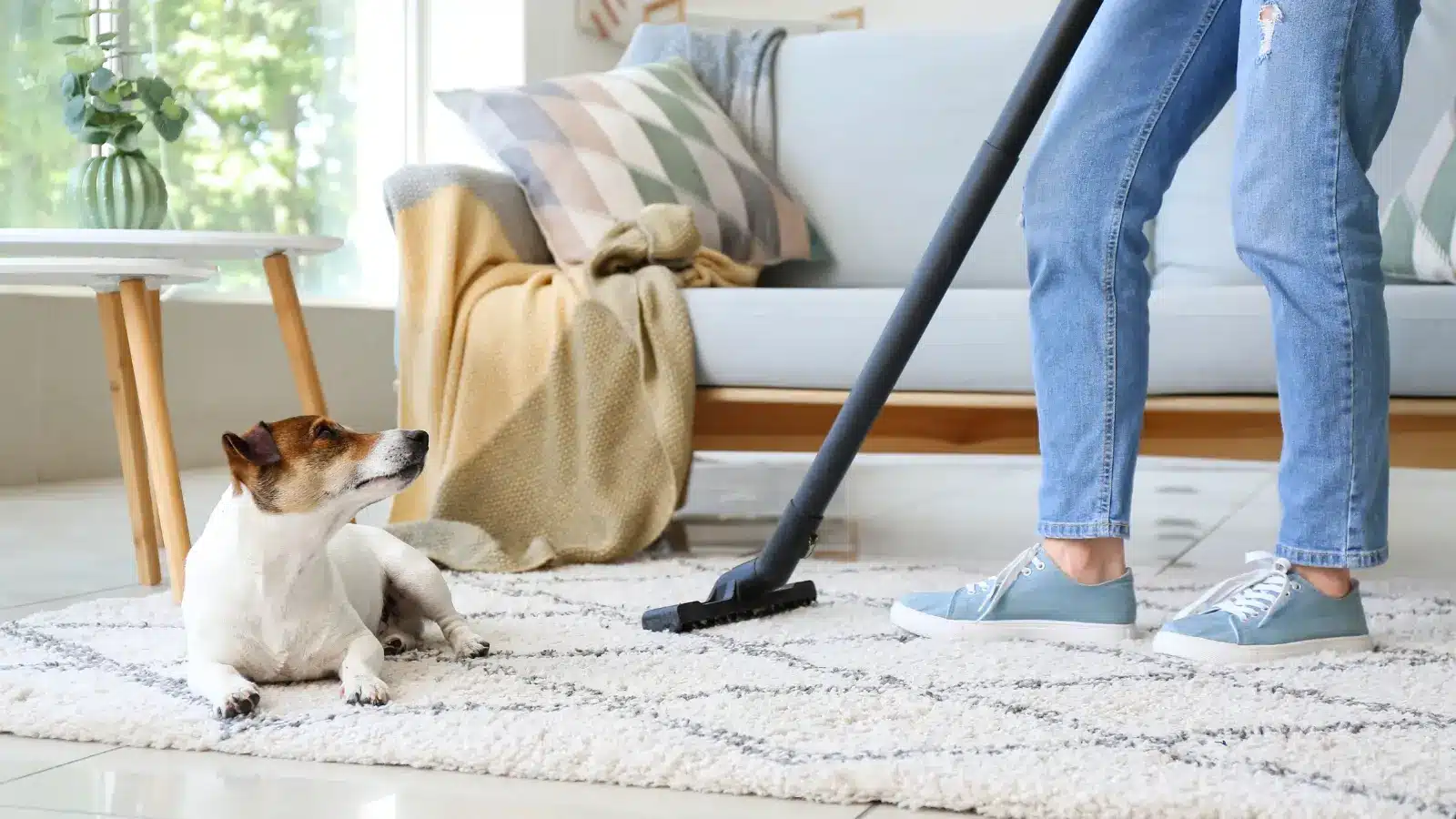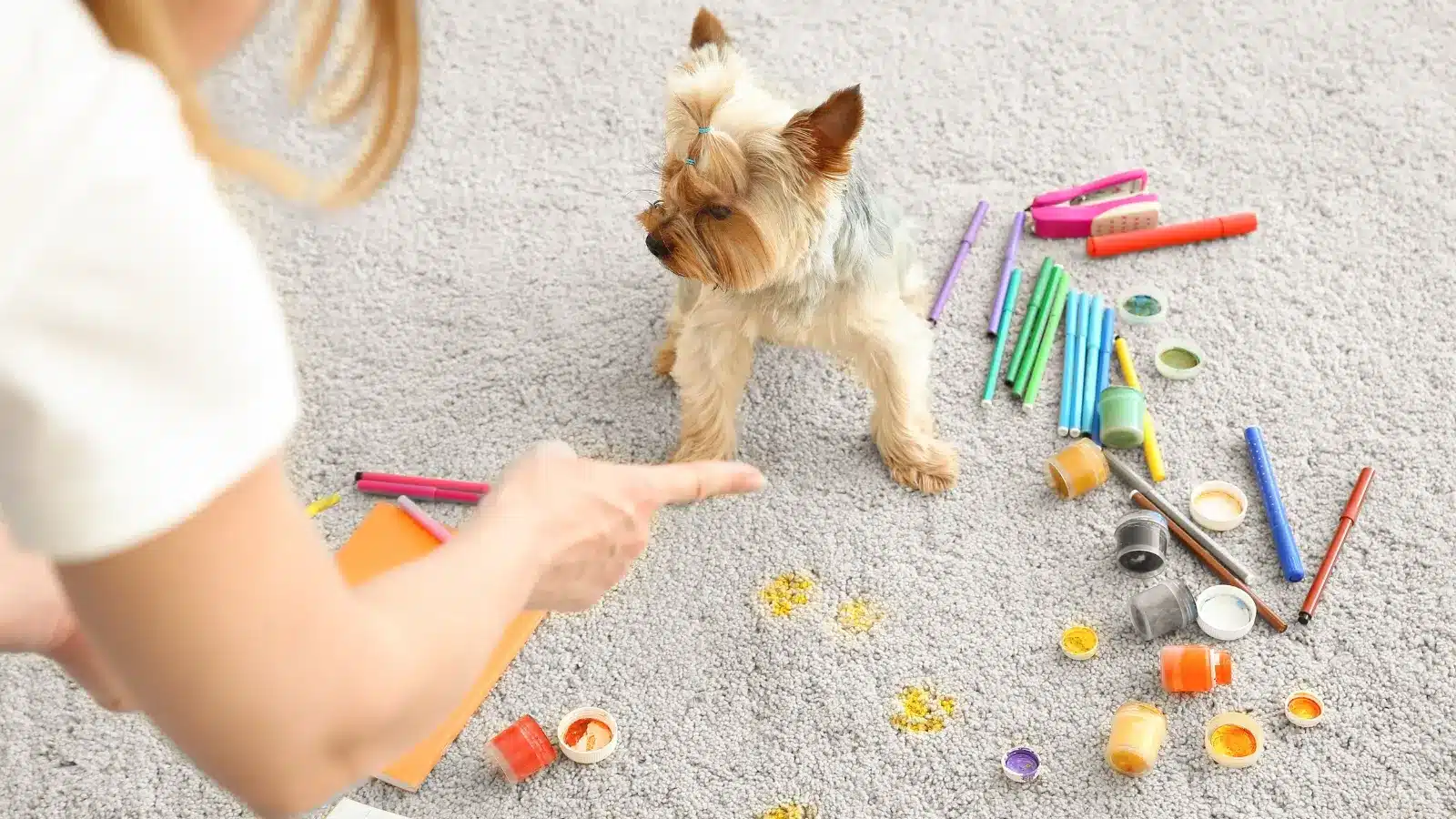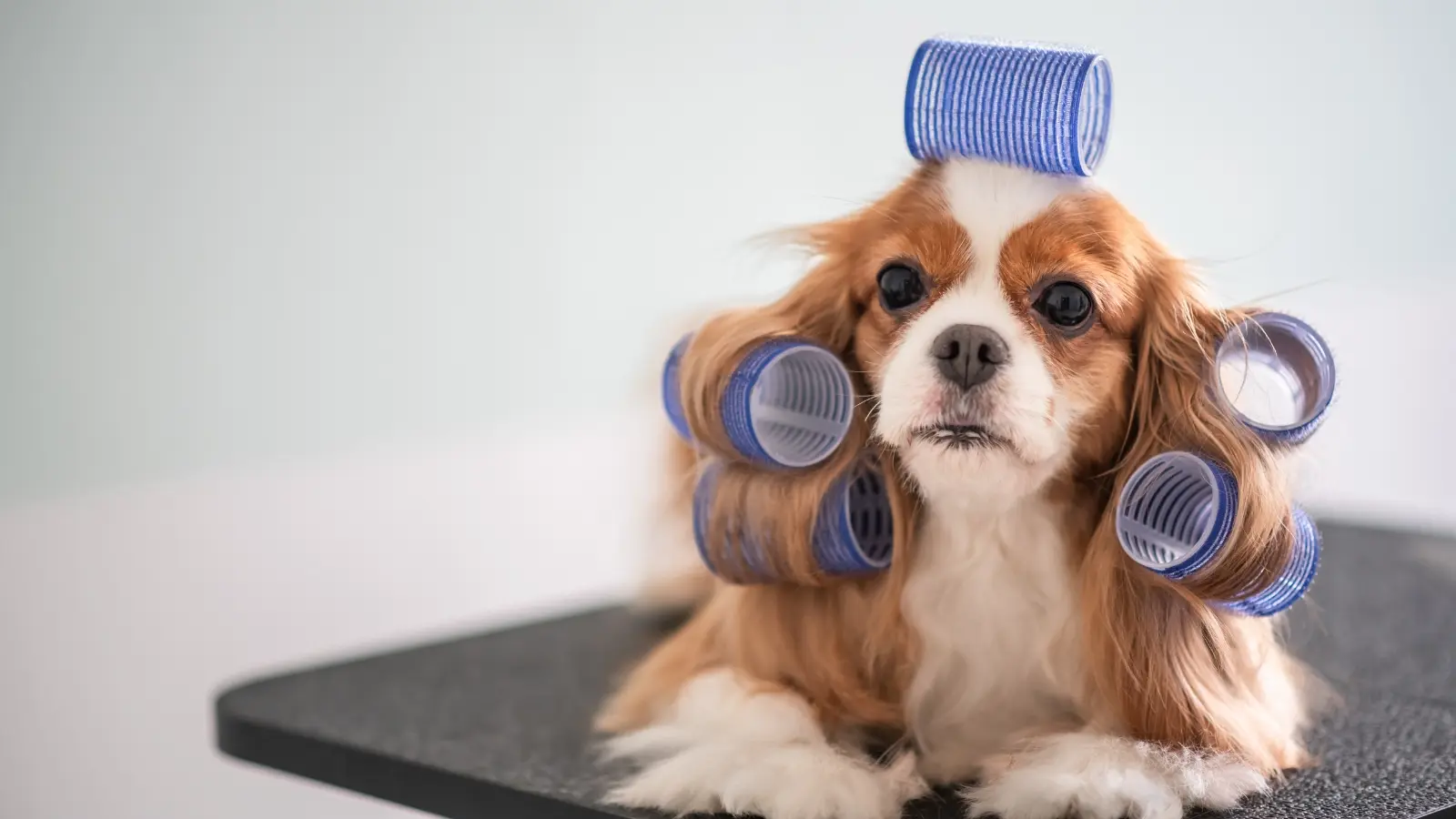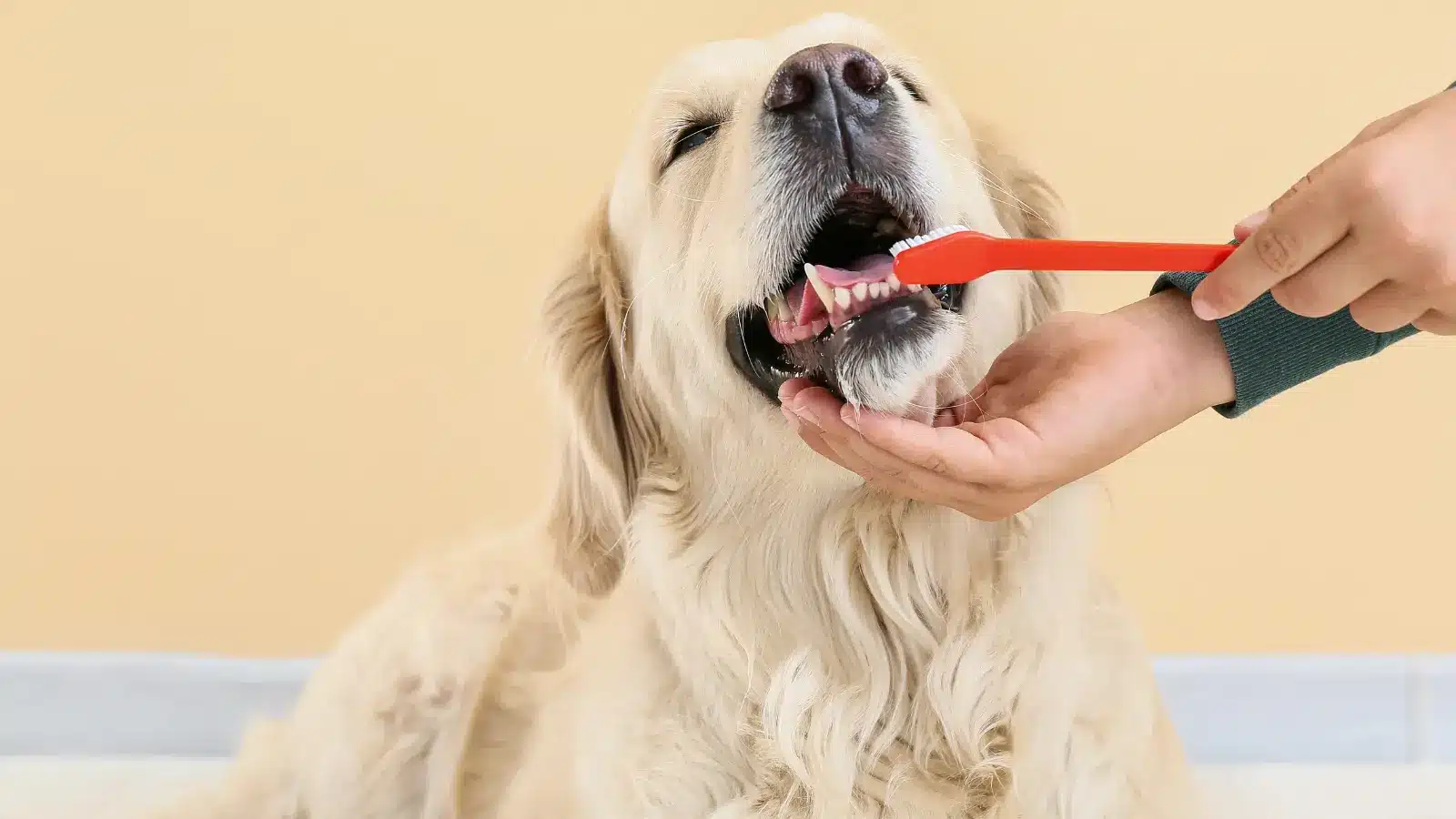Blog Spring Cleaning for Dog Owners
For dog owners, maintaining a clean and healthy home is for their well-being and that of their furry friends. Spring cleaning provides pet parents the ideal opportunity to thoroughly clean a home and create a safe environment for all concerned.
By tackling pet hair, odors, and stains, organizing the dog’s supplies and toys, grooming the dog, and maintaining the yard, you enjoy a healthy and clean home for the four-legged companion.
Essential Supplies and Tools for Spring Cleaning with Dogs
Gathering the necessary supplies and tools is essential before diving in. You need a vacuum cleaner with strong suction power. A pet hair brush and lint roller are handy for quick touch-ups. Choose pet-safe cleaning products that are free from harmful chemicals.
Look for products on the label that say they are safe for pets or make natural dog-friendly cleaning products using ingredients such as baking soda and vinegar.
Spring Cleaning Tips for Tackling Pet Hair, Odors, and Stains

Dealing with pet hair is among the most significant challenges for pet owners. To effectively remove pet and dog hair from carpets and furniture, use a damp squeegee or rubber gloves to collect the hair in one place before you vacuum.
For stubborn odors and stains, it is essential to act quickly. Blot the stain with a clean paper towel or cloth to absorb as much liquid as possible. Use an enzymatic cleaner designed specifically for pet stains to break down odor-causing particles.
Avoid the use of ammonia-based cleaners. They attract dogs to re-mark the area.
Areas to Focus On
Certain areas of the home require extra attention when spring cleaning. Upholstery and carpets harbor allergens, pet dander, and dirt. Consider hiring a professional or renting a carpet cleaner to clean the carpets deep.
Use a fabric-safe cleaner on upholstery and blankets and follow the manufacturer’s instructions. Remember the dog’s bedding or crate to eliminate any lingering pet odors. Please pay attention to frequently touched areas like light switches and doorknobs and disinfect them regularly.
Organizing Dog Supplies, Treats, and Toys

Keeping the dog’s supplies, treats, and toys organized helps maintain a tidy home and makes it easier to find what you need. Start by decluttering and getting rid of used or old items. Sort the hard and soft toys into categories and use baskets or storage bins to organize items.
Label the bins to make finding specific toys easier. Designate a particular area for supplies like grooming tools, collars, and leashes so they are easily accessible when needed.
Cleaning Dog Bedding and Accessories
Regularly clean the dog bedding and accessories for their comfort and health. Wash the bedding in hot water with a pet-safe detergent to kill any parasites and bacteria that may be present. If the pet’s bedding is too large for a home washing machine, use a commercial machine with an extra-large capacity at a laundromat.
Check the manufacturer’s cleaning recommendations for accessories such as leashes and collars. If they can be washed in a washing machine, place them in a mesh laundry bag to prevent tangling.
Grooming the Dog

Grooming the dog is about more than aesthetics. It plays a role in the pet’s health and well-being. Regular brushing stimulates the skin, prevents matting, and helps remove loose hair. Choose a brush suitable for the dog’s coat.
Be gentle to avoid causing discomfort. Bathing the dog is another essential aspect of grooming. Use a mild dog shampoo and thoroughly rinse to remove all traces of soapy water. Do not forget to trim the dog’s nails to prevent them from getting too long and causing injury or discomfort.
If you are uncomfortable trimming the dog’s nails, get help from a professional groomer.
Maintaining the Yard
A well-maintained and clean yard is essential to a dog’s health and happiness. Picking up the dog’s waste prevents the spread of parasites and bacteria. A disposable bag or pooper scooper makes the task easier.
Consider using a pet-friendly lawn spray to promote healthy grass growth and neutralize odors in grassy areas. Also, keep the yard free from sharp objects or fallen branches that could harm the dog.
Regularly inspect gates and fences to ensure they are in good condition and secure.
Preventing Ticks and Fleas
Springtime brings an increase in tick and flea activity. Taking preventative measures for the dog’s well-being and health is crucial. Regular use of the vacuum helps remove flea eggs and larvae from furniture and carpets.
Washing the dog’s bedding in hot water kills any ticks or fleas present. Check with a flea comb for signs of infestation in pet beds, like live fleas or flea dirt. Talk to a veterinarian about flea and tick products appropriate for your dog, like oral medicines or topical treatments.
Protect Your Dog During Spring Cleaning
Spring cleaning is essential, but keeping the dog safe during the process is equally important. Many cleaning products contain toxic chemicals if inhaled or ingested. Keep tools and cleaning products out of the dog’s reach, preferably on a high shelf or in a locked cabinet.
Open windows or use fans to ensure proper ventilation when using cleaning products. If you use a carpet or steam cleaner, keep the dog in a separate room until the area is arid and free from residual chemicals.
Enjoy a Clean and Healthy Home for You and Your Furry Friend

Spring cleaning is more than tidying up a home. It creates a healthy and clean environment for you and your pet. Following the spring cleaning tips mentioned above, you effectively remove pet hair, odors, and stains, organize the dog’s supplies and toys, groom the dog for a fresh spring look, prevent ticks and fleas, maintain a clean outdoor space, and ensure dog-friendly home organization during the process.
You can enjoy happy moments with your four-legged companion in a healthy and clean home.
FAQs
1. How often should you clean a house with a dog?
Vacuum once a week to keep a pet parent’s home clean and free from hair and dander. If the pet sheds heavily, it may be necessary to vacuum more often. It is also a good idea to clean the vacuum brush and filter regularly to maintain optimum performance and suction.
2. How often should you mop the floors if you have pets?
High-traffic areas, such as bathrooms, kitchens, and entryways, are prone to muddy paws and benefit from frequent cleaning—multiple times a week or daily.
3. Do dogs prefer clean surroundings?
Four-legged friends need clean surroundings to keep pets healthy and happy. Cleaning routines with pets keep parasites and diseases at bay, and furry pets are less apt to encounter potential dangers and injuries.
4. Should I mop up pee?
When you see a wet spot or puddle on linoleum, tile, or hardwood floors, mop it up with an old towel, rags, or paper towel. Throw used paper towels away, and set rags aside to be washed later.
Contact Very Important Paws today in Palm Beach for all your dog boarding, hotel, daycare, grooming, and training needs.

